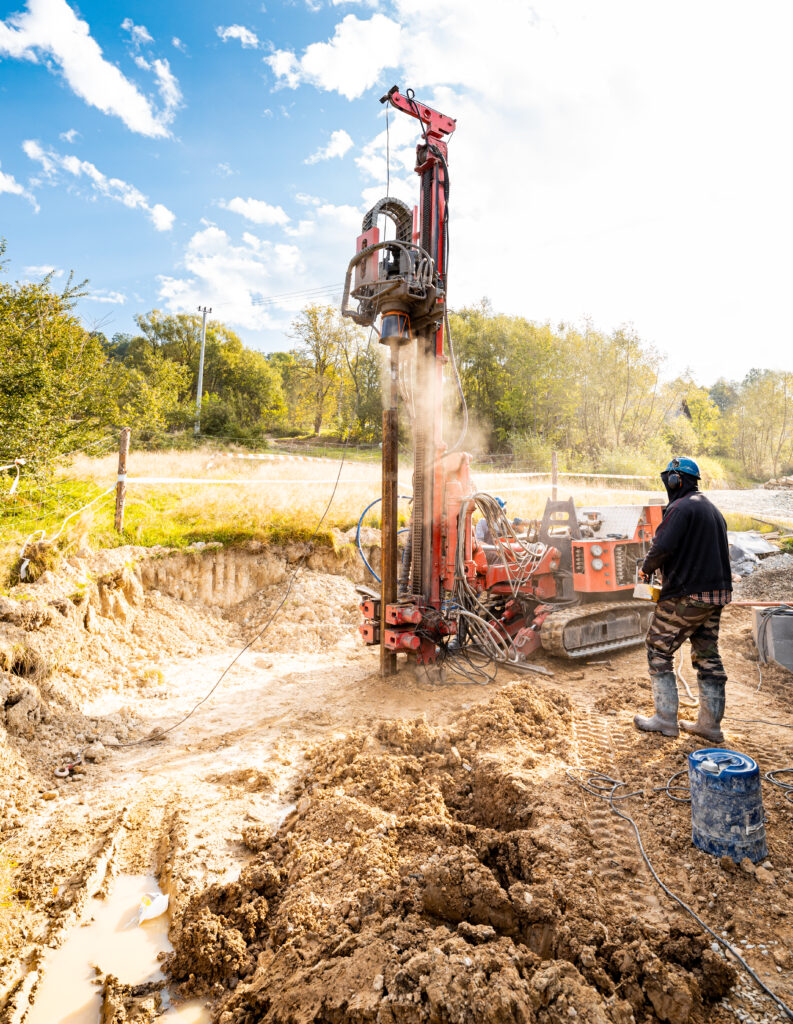
Getting water samples is easy, but only if you can reach it. Too often we settle for data that came from samples that are “close enough” to the target area. See how horizontal monitoring wells can provide groundwater samples from the exact area.
Horizontal monitoring wells offer significant advantages when delineating and monitoring contamination, particularly on environmental projects where contamination exists in limited-access locations. Alternative methods may be used to collect samples of other mediums from beneath buildings, such as air samples. Even soil sampling may be performed from inside of a facility, but it requires drilling through the existing foundation and interrupting business operations. However, due to space constraints for a drill rig, it is difficult to acquire groundwater samples from beneath a building through vertical means.
Through horizontal directional drilling (HDD) techniques, the drill rig can be established in a safe location outside of the building. As a result, business continues as usual while horizontal monitoring wells are drilled and installed beneath the building. As a result, the wellheads for the monitoring wells are established outside of the building footprint so that subsequent sampling does not involve entering the building at all. The installation of horizontal monitoring wells is not only limited to access beneath buildings, but also above-ground storage tanks (ASTs) and underground storage tanks (USTs), and environmentally sensitive areas such as wetlands or lakes.
So, what is the design difference between horizontal remediation wells (HRW) and horizontal monitoring wells? Compared to vertical wells, horizontal remediation wells are known for the significant increase in screen footage that can be put in direct contact with subsurface contamination. Horizontal monitoring wells, however, tend to contain less screen in most circumstances. By placing 5 to 10 feet of screen at the end of the horizontal well, rather than hundreds of feet of screen, the groundwater sample is collected from a discrete, known point in the subsurface. The sample is then often collected by means of a downhole pump, which brings the groundwater to the surface for collection and analysis. By utilizing horizontal monitoring wells, data gaps associated with access restraints on site are reduced and future remediation efforts can be more effectively targeted.
Horizontal monitoring wells are a refined method of collecting groundwater samples from hard-to-access areas. Through minimally invasive drilling processes, site-related business operations can continue without interference during the installation and subsequent sampling of the monitoring wells.
77 N. Plains Industrial Road
Wallingford, CT 06492
Over 5,000 Horizontal Remediation Wells Installed Worldwide
NAICS Codes: 237990 Heavy Equipment & Horizontal Drilling • 237110 Water & Sewer Line and Related • 541620 Environmental Consulting Services for HRW Screen Design • 237130 Underground Cable Lying & Utility Line Construction
Copyright 2025 Directional Technologies, Inc. All Rights Reserved.